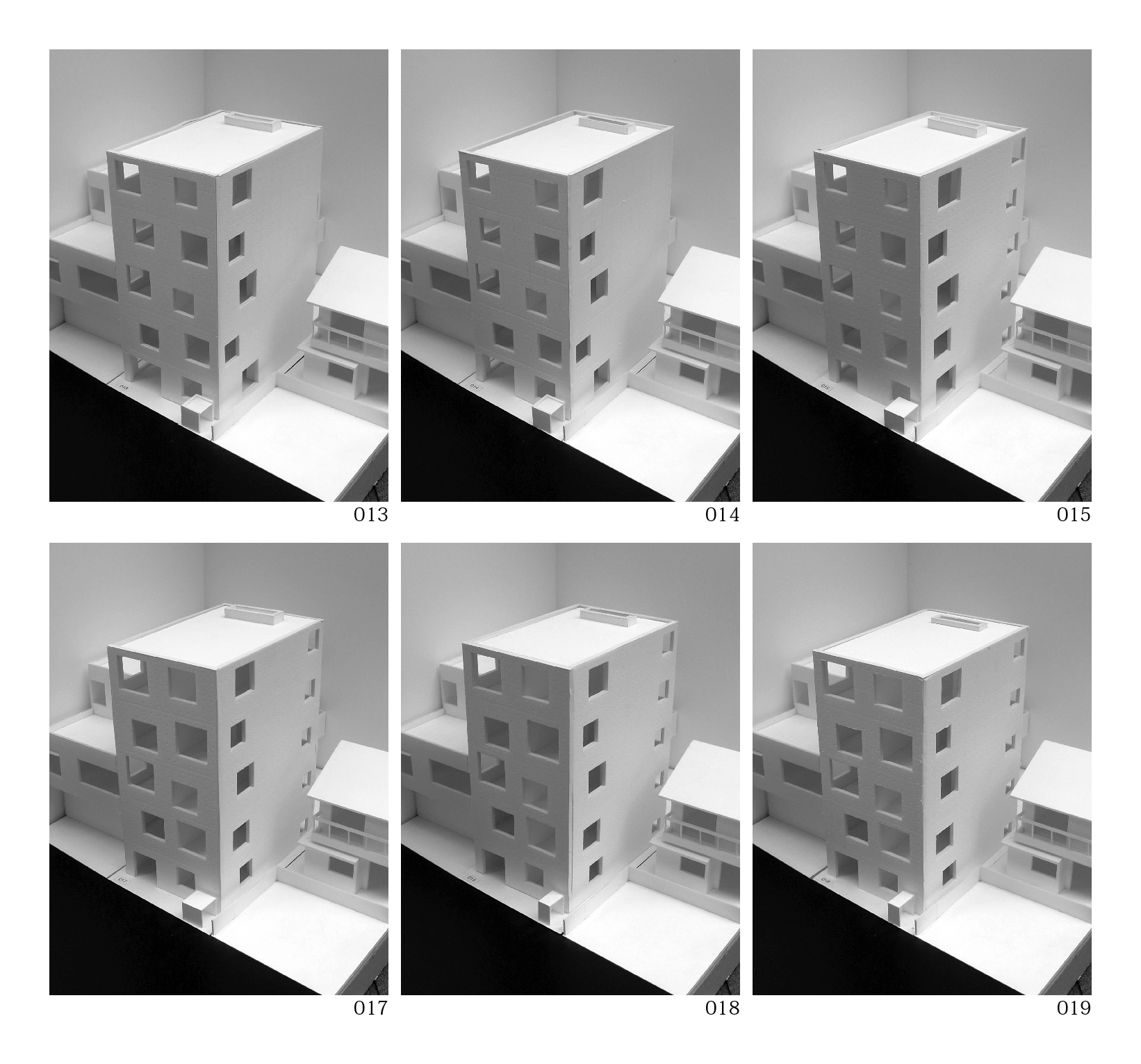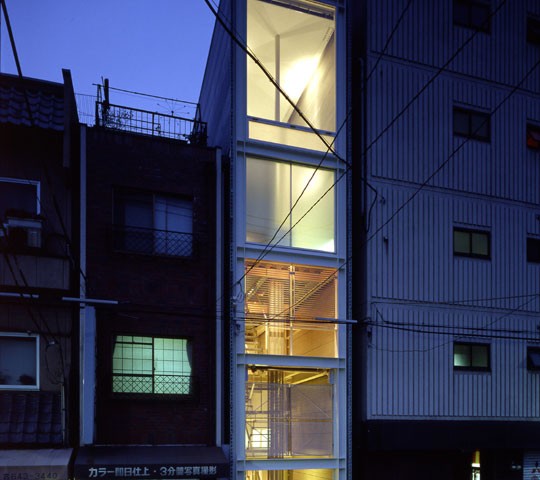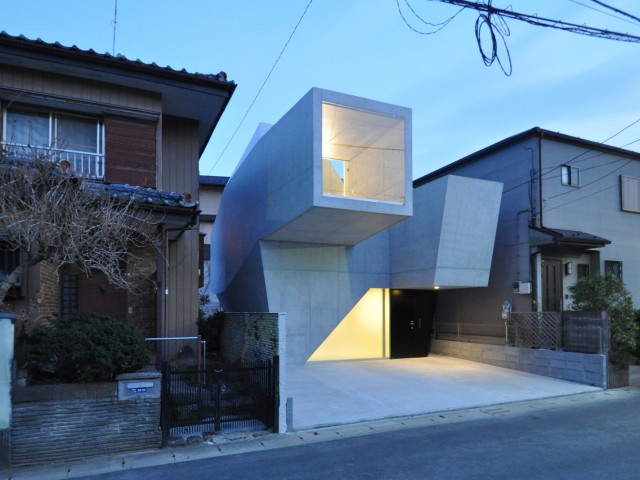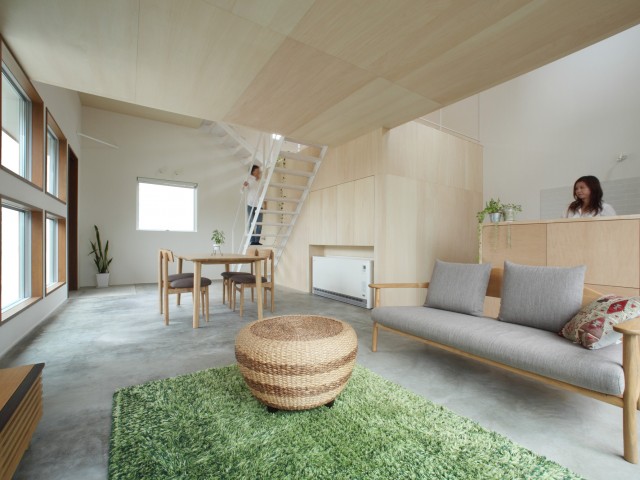Project Info
- Architects: RFA
- Team: Ryuji Fujimura (lead architect)
- Location: Tokyo, Tokyo Metropolis
- Photographs: Takumi Ota
- Function: Apartment buildings
- Completion: February 2011
- Structure: Reinforced concrete
- Floor area: 302.23 m² (5F)
- Material: Concrete
APARTMENT S | RFA
Words by mooponto Staff
December 31, 2012
In this experiment, our aim was to design a small apartment building without using “symbols” such as a roof, wall, floor, ceiling, and window. For a start, we placed a concrete box in the purest form possible and treated openings as “holes” and not as “windows”. Our approach may be nothing special because many architects had already taken similar approaches in the past, but it was very important training for an architect like myself who got accustomed to playing with “symbols.”
While closely observing openings punctured at regular intervals on the model, I realized that one of the openings on the first floor faced a garbage storage shed and decided to shift it to avoid the shed. Then we recomposed other openings accordingly in relation to the shifted opening and eventually conceived a unique window layout giving a slightly swaying impression to the building.
Our concept of “treating a box as a box” led to the idea of placing balconies on the north side. Because most people don’t hang dry laundry outside in the city center, we made floor plans where each resident opens the door and enters the balcony first before entering the room. This layout allows residents to open windows facing the north balcony and south windows at the same time so that the wind blows through the apartment while keeping the entrance door locked.
In terms of section, we set gradually changing floor heights instead of dividing the building height evenly: the top floor has the lowest ceiling height because it receives the most amount of sunlight, and from the second to fourth floors, the floor height is increased by 50 mm than the upper floor so that all floors receive the same amount of light. In this project, we contemplated the meaning of layering in architecture and incorporated benefits [of multistory living] in each room.





































